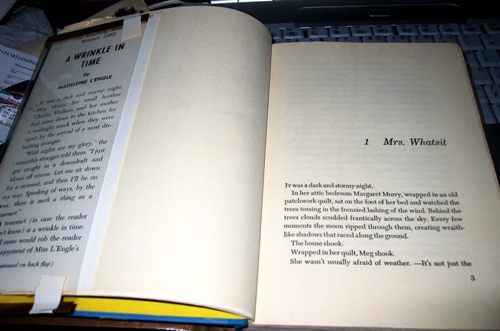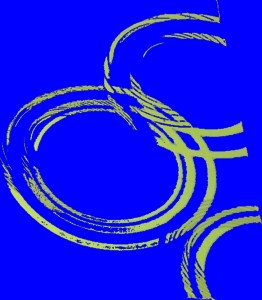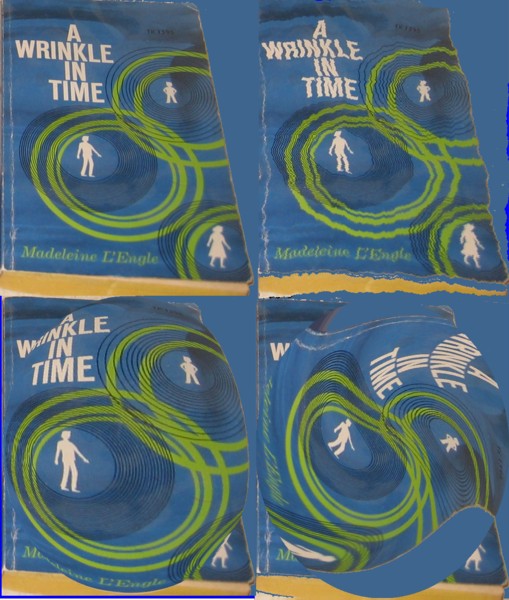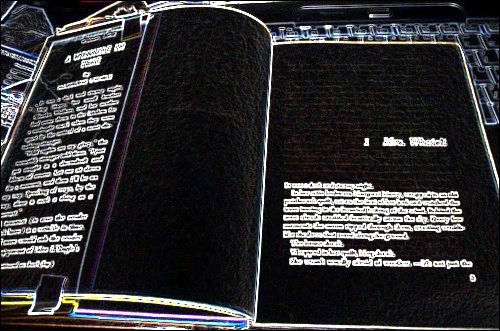Your Monday Photo Shoot: Picture something that represents literacy to you. People reading, a street sign you wouldn't want not to read, a favorite book: Anything that conveys the significance of words. Okay. After the chapter title, the words on the photo to the right begin the same way as a book by Snoopy, and one by Bulwar-Lytton, who probably originated it:
Okay. After the chapter title, the words on the photo to the right begin the same way as a book by Snoopy, and one by Bulwar-Lytton, who probably originated it:
"It was a dark and stormy night."
From that deliberately cliché beginning, Madeleine L'Engle quickly introduces us to Meg Murry, a girl whose father is missing, whose 5-year-old brother is a genius but rumored to be "not quite bright," and who is herself suffering through a difficult adolescence. Meg is about to meet a strange old woman called Mrs Whatsit, and be dragged into an adventure that changes everything. I can't tell you how many times I've gone on that adventure with her, but it must be dozens. In a way, this posting is a continuation of my entry from the other day, "Don't Wanna Do Your Homework." As I explained there, I have an online bibliography about the books of Madeleine L'Engle. As a result of that web site, I get a fair amount of email about L'Engle and her books, from people of all ages and literacy levels. Because of this, and because of the history of the novel itself, it does represent literacy to me, more than any other book. It also happens to be my all-time favoite book, at least most of the time.
In a way, this posting is a continuation of my entry from the other day, "Don't Wanna Do Your Homework." As I explained there, I have an online bibliography about the books of Madeleine L'Engle. As a result of that web site, I get a fair amount of email about L'Engle and her books, from people of all ages and literacy levels. Because of this, and because of the history of the novel itself, it does represent literacy to me, more than any other book. It also happens to be my all-time favoite book, at least most of the time.
Madeleine L'Engle got the idea for A Wrinkle in Time during a cross-country camping trip with her family in 1959. As she explains in her introduction to the 25th Anniversary limited edition of Wrinkle,
"...the first idea for Wrinkle came to me as we were driving across the Painted Desert. The names Mrs Whatsit, Mrs Who, and Mrs Which simply popped into my head."
L'Engle had been reading Einstein, and her personal life was in upheaval, as the family left the country life in Connecticut to return to New York City, where her husband, Hugh Franklin, could resume his acting career. These factors contributed to the philosophical mood L'Engle was in at the time, as did concerns about the Cold War.
Further reading about science fueled her inspiration. L'Engle proceeded to write her most famous book, quite possibly her best. She finished it in early 1960, and knew that it was something special. It was only her seventh book, with more than fifty to follow in the years to come.
 But she couldn't sell A Wrinkle in Time:
But she couldn't sell A Wrinkle in Time:
I was kept hanging for two years, by many different publishers.
"What is it?" I would be asked. "Is it for children, or adults?"
"It's for people. Don't people read books?"
Over and over again, I received nothing more than the formal, printed rejection slip. These cold, impersonal rejections hurt. I began to doubt myself...
On the Monday before Christmas, 1961, L'Engle was so discouraged by the arrival of the latest rejection slip that she told her agent to send the manuscript back to her. "It's too different," she told him. "Nobody's going to publish it. It's too hard on my family. Every time it's rejected, I bleed all over the living-room rug."
But then she met John Farrar of Farrar, Straus and Company, at a Christmas party her mother threw that year. Ultimately, he decided to publish it because he loved it, but warned her that the book would not sell well. "It's much too difficult for children," he said.
 He was wrong. L'Engle says that "it took off like a skyrocket." It went on to win the Newbery Award for 1962, along with many other honors. It's been through many editions and many translations, and has been continuously in print for over forty years. "The problem wasn't that it was too difficult for children," she concludes in her 1987 introduction. "It was too difficult for adults."
He was wrong. L'Engle says that "it took off like a skyrocket." It went on to win the Newbery Award for 1962, along with many other honors. It's been through many editions and many translations, and has been continuously in print for over forty years. "The problem wasn't that it was too difficult for children," she concludes in her 1987 introduction. "It was too difficult for adults."
This has turned out to be true in other ways. Many people tried over the years to get the rights to produce a movie version of the book, but from L'Engle's perspective, none of them seemed to really understand the book. When it was finally made as a Disney tv movie, L'Engle told Newsweek, "I expected it to be awful. And it is."
 Worse, the book has frequently come under attack by misguided Christians, who mistakenly believe that the book promotes witchcraft, magic, secular humanism (whatever that is), and fortune-telling, and leads children astray from Christian values. A literate, thoughtful reading of the book reveals that the three "witches" are not witches or Satanists at all. They are retired stars who gave up their celestial existences to fight evil. The fortune-teller is a science fictional one, who uses a "crystal ball" to see things far away, not to foretell the future. (And anyway, the Bible is full of prophecy, and nobody says that Isaiah or St. John were evil fortune-tellers.) Mrs. Who quotes St. Paul, and Meg defeats evil with love. No, there is nothing anti-Christian about the book, and everything wrong with the narrow-minded ignorance that results in A Wrinkle in Time appearing on ALA listings of banned books.
Worse, the book has frequently come under attack by misguided Christians, who mistakenly believe that the book promotes witchcraft, magic, secular humanism (whatever that is), and fortune-telling, and leads children astray from Christian values. A literate, thoughtful reading of the book reveals that the three "witches" are not witches or Satanists at all. They are retired stars who gave up their celestial existences to fight evil. The fortune-teller is a science fictional one, who uses a "crystal ball" to see things far away, not to foretell the future. (And anyway, the Bible is full of prophecy, and nobody says that Isaiah or St. John were evil fortune-tellers.) Mrs. Who quotes St. Paul, and Meg defeats evil with love. No, there is nothing anti-Christian about the book, and everything wrong with the narrow-minded ignorance that results in A Wrinkle in Time appearing on ALA listings of banned books.
Meanwhile, Wrinkle is still taught in school, and at home by home-schoolers who understand the book better than those who would ban it. Schoolkids write to me, asking questions to get out of reading or thinking for themselves, or because they read it but are not sure they understand. Others--both adults and children--write to me because they love the book, and want to know what to read next. That's literacy for you!
And back in 1965, one particular ten-year-old found it in the library at Pleasant Street School, read it and loved it. I did understand it, but perhaps not as much as I do now, all these years later. When I think of this book, I wrinkle back to my own difficult adolescence, and appreciate anew this wonderful book that helped me get through it.
Thanks, Madeleine L'Engle.
Karen


P.S. www.savedisney.com happens to have emailed a relevant quote yesterday:
"There are fashions in reading, even in thinking. You don't have to follow them unless you want to. On the other hand, watch out! Don't stick too closely to your favorite subject. That would keep you from adventuring into other fields. It's silly to build a wall around your interests."
--- Walt Disney

 You are looking at an archive edition of
You are looking at an archive edition of 



2 comments:
I don't have to do a Monday Photo Shoot entry...you did it for me. LOL This is one of my all time favorite books too. The edition you picture here is the cover I remember best...the first time I saw it on my elementary school library shelf. There is another book I read back in like 3rd or 4th grade that I had to return before I finished it and I was never able to locate it again. I can't recall the title...and only a small portion of the plot. Old house...snow globe...lonely child...time travel to the house's past where the lonely little girl befriends a young boy who lived in the house back when it was new. With my luck, it's no longer in print. LOL
That was beautiful.
V
Post a Comment